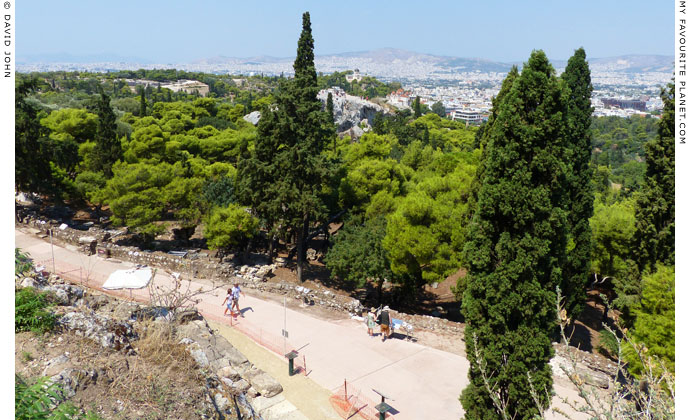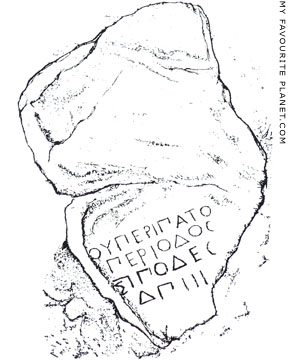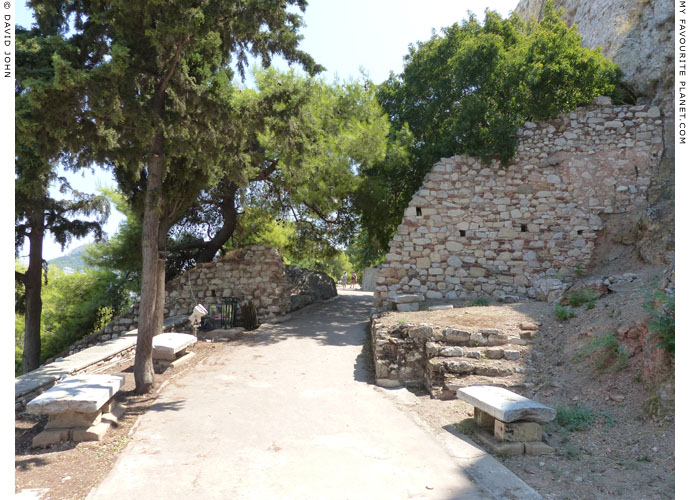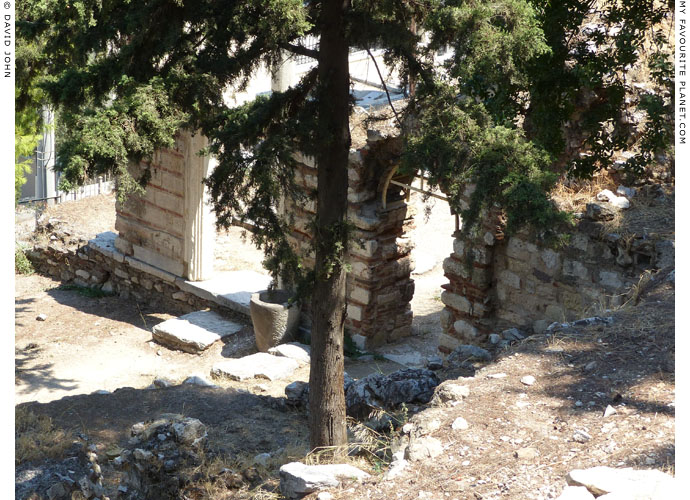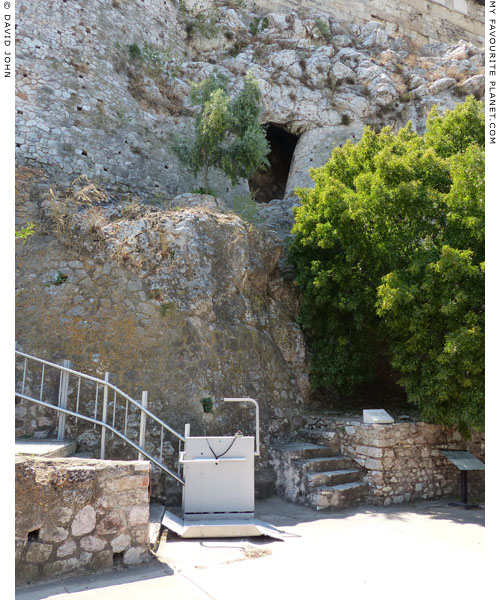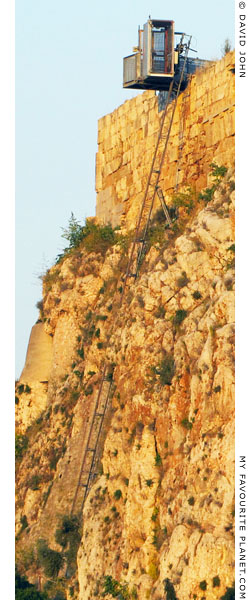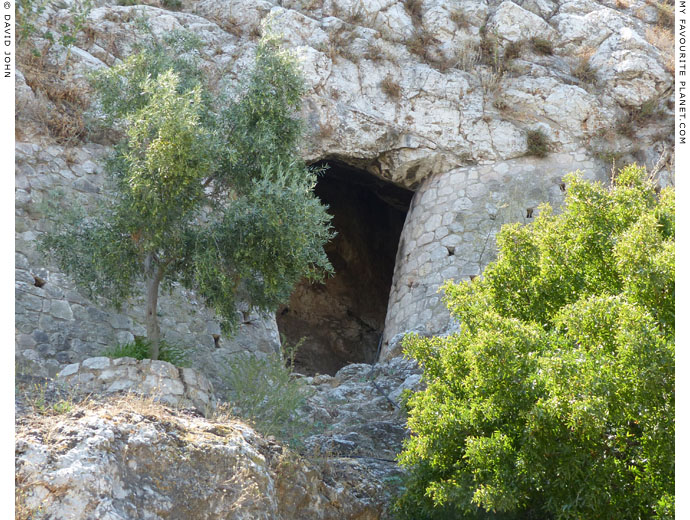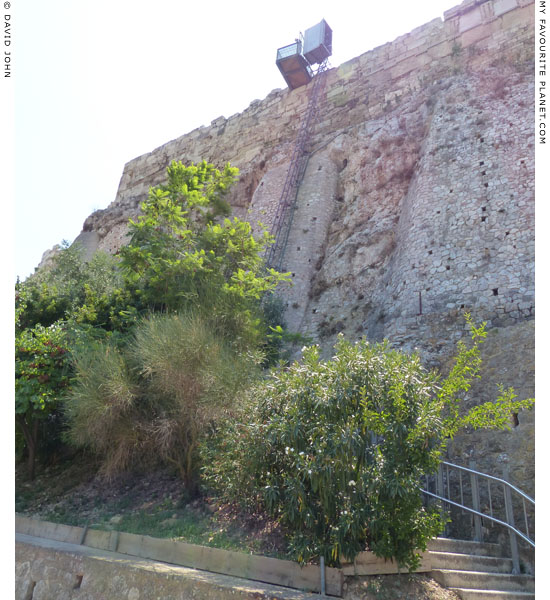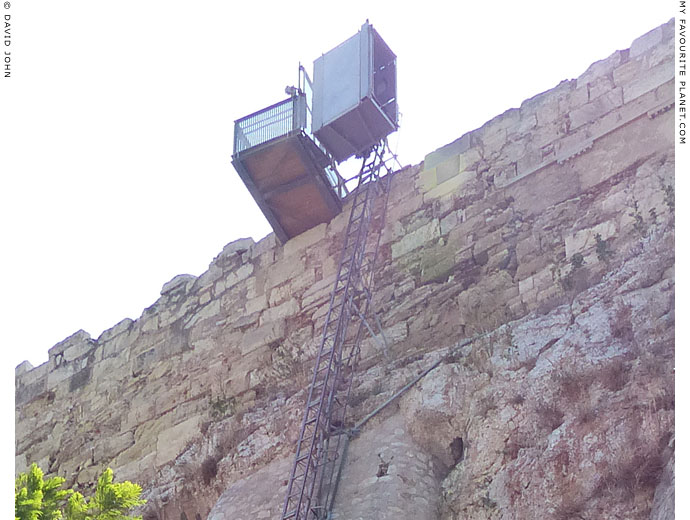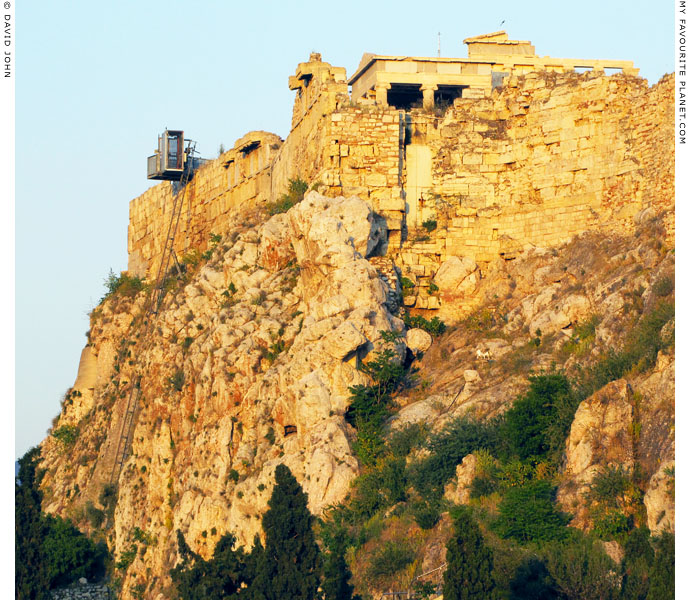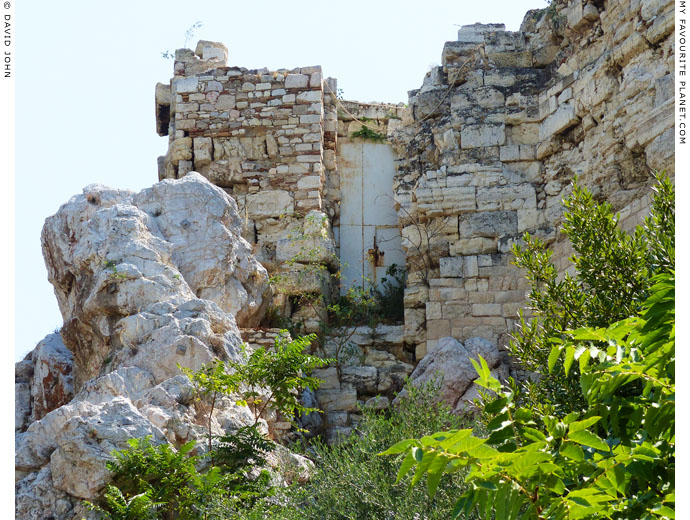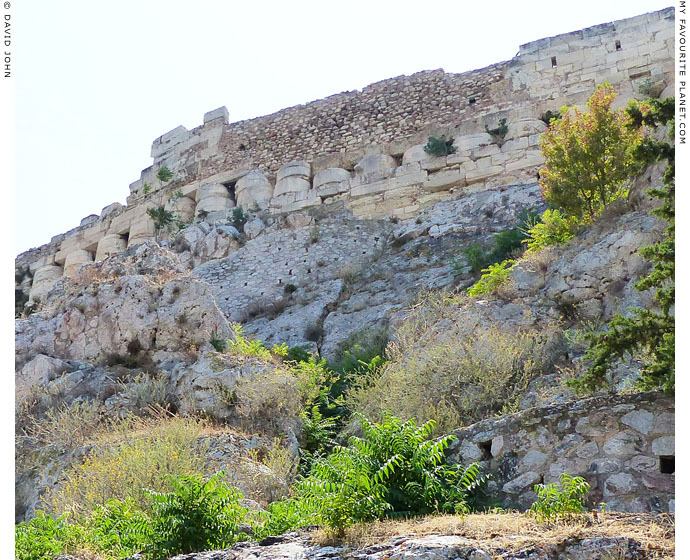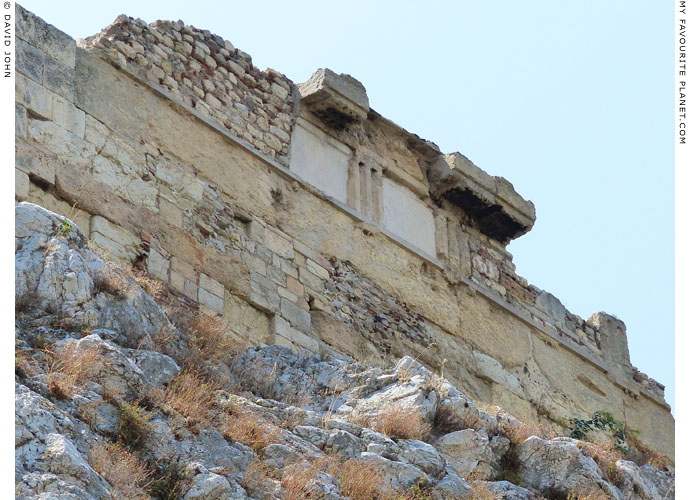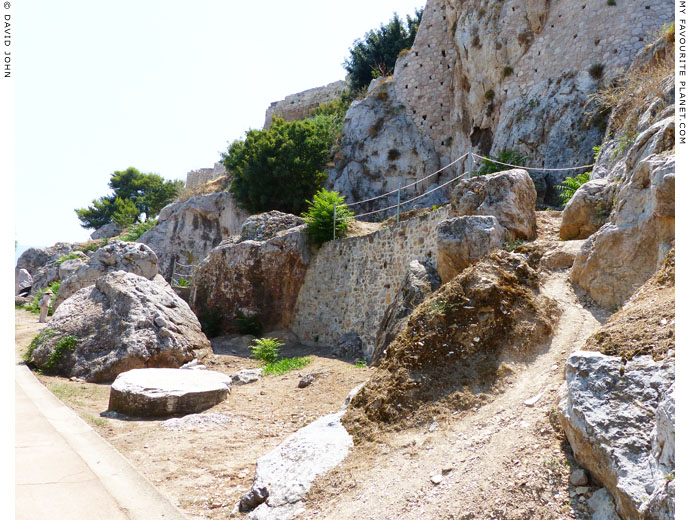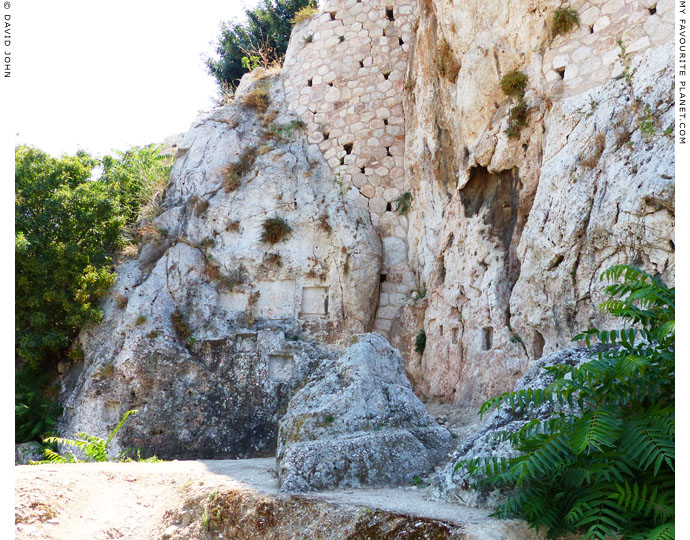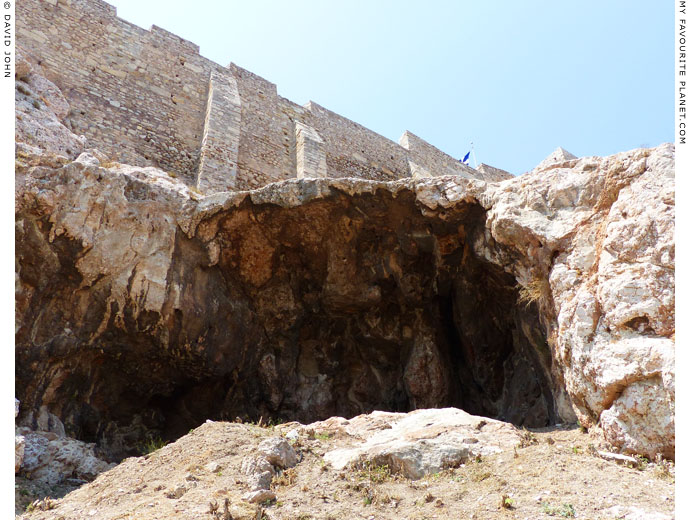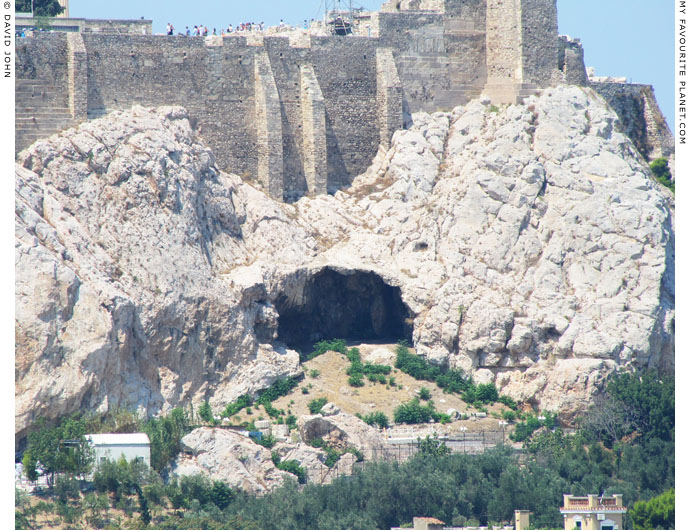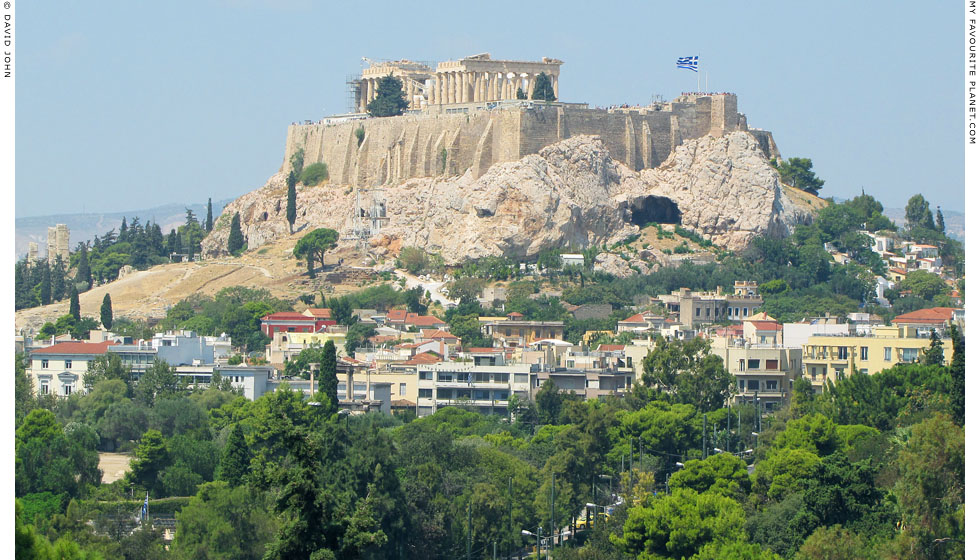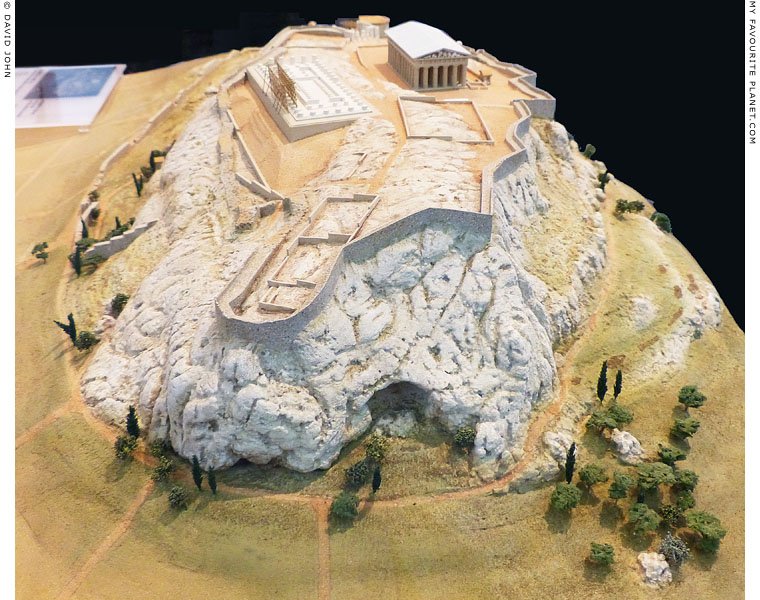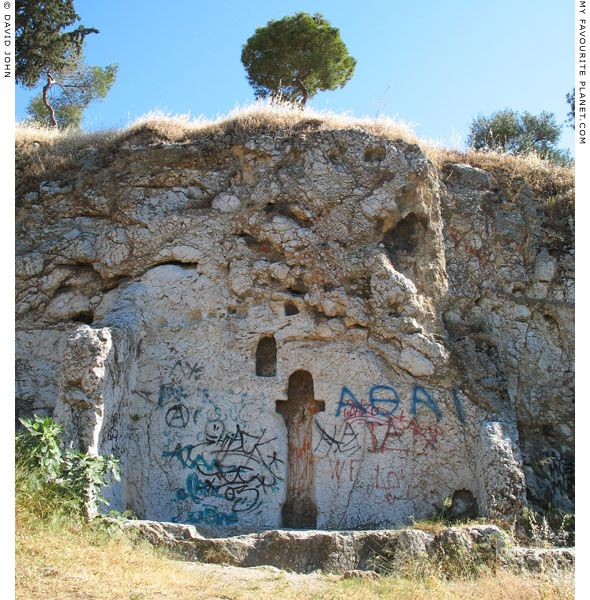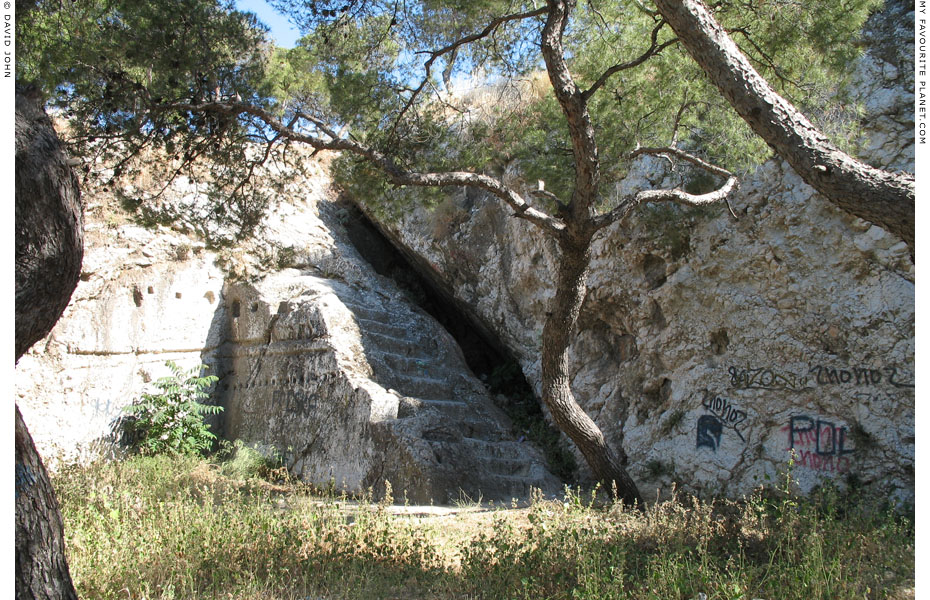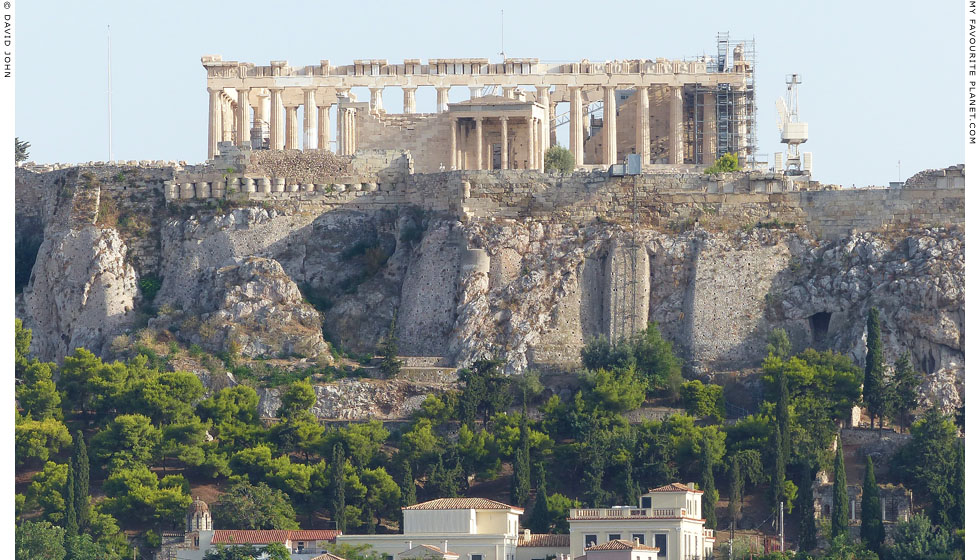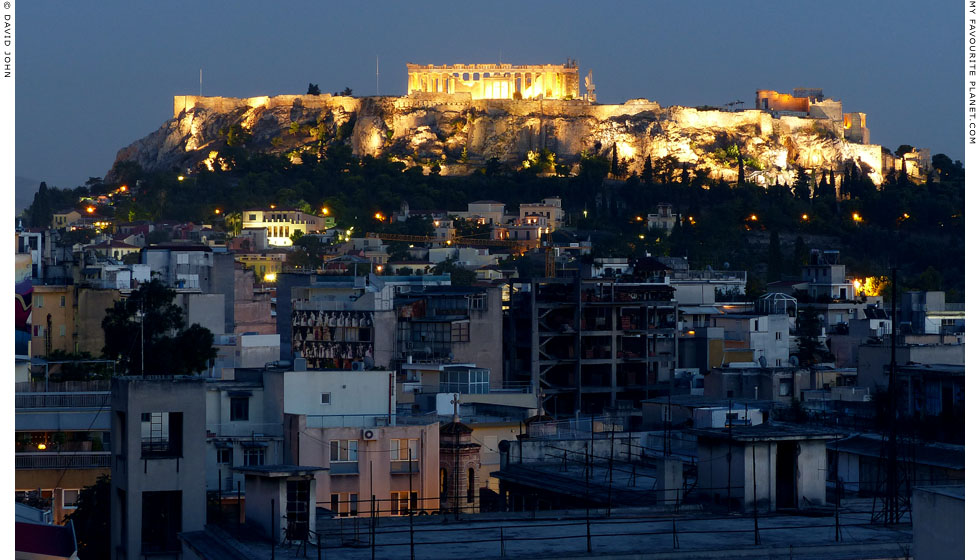1. Broneer on the "Mycenaean Fountain"
Oscar Broneer, A Mycenaean Fountain on the Athenian Acropolis. Hesperia Volume 8, No. 4 (October-December 1939), pages 317-433. The American School of Classical Studies at Athens. At jstor.
2. The Arrephoria
The Arrephoroi (Ἀρρηφόρια; singular Ἀρρηφόρος, Arrephoros; from ἀρρητον, mystery, and φέρω, I carry) were two girls between 7 and 11 years old, chosen from prominent families to serve as servants of Athena Polias for one year. They lived in the Arrephorion (Αρρηφόριον, the House of the Arrephoroi), at the northern edge of the Acropolis, northwest of the Erechtheion. Among their sacred duties was to attend to the sacred olive tree of Athena, and to assist the women who made the peplos, the new robe for the xoanon (cult statue) of the goddess which was ceremonially brought to the Acropolis during the annual Panathenaic Festival.
Festival of Arrephoria, which took place in the month Skiroforiona (Σκιροφοριώνα), was also called the Hersiphoria (Ερσηφόρια) after Herse, one of the three daughters of Kekrops (see note below). At the end of the festival the girls were released from their duties and replaced by a new pair.
"I was much amazed at something which is not generally known, and so I will describe the circumstances. Two maidens dwell not far from the temple of Athena Polias, called by the Athenians Bearers of the Sacred Offerings. For a time they live with the goddess, but when the festival comes round they perform at night the following rites. Having placed on their heads what the priestess of Athena gives them to carry – neither she who gives nor they who carry have any knowledge what it is – the maidens descend by the natural underground passage that goes across the adjacent precincts, within the city, of Aphrodite in the Gardens. They leave down below what they carry and receive something else which they bring back covered up. These maidens they henceforth let go free, and take up to the Acropolis others in their place."
Pausanias, Description of Greece, Book I, chapter 27, section 3. At Perseus Digital Library.
3. Broneer on Eros and Aphrodite
Oscar Broneer (1894-1992), Eros and Aphrodite on the North Slope of the Acropolis in Athens. Hesperia Volume 1 (1932), pages 31-55. The American School of Classical Studies at Athens (ASCSA).
The two incriptions referring to Eros and Aphrodite are IG I(3) 1382a and b:
IG I(3) 1382a:
το͂ι Ἔρωτι ℎε ἑορτὲ
[τ]ετράδι ℎισταμέν̣[ο]
Μονιχιο͂ν[ο]ς μεν[ός]
IG I(3) 1382b:
Ἀφροδ[ί]τ̣[ει]
4. Georgios Dontas
The archaeologist Dr Georgios Dontas (Γεώργιος Δοντάς, born in Athens in 1923), former Vice President of the Archeological Society in Athens (1985-1986), Ephor of Antiquities in Rhodes, Corfu and Athens, and Director of the Acropolis.
5. Pausanias on Aglauros
Pausanias wrote that the three daughters of Kekrops were Herse, Aglauros and Pandrosos, and that Herse and Aglauros jumped from the Acropolis in terror after seeing Erichthonios:
"Above the sanctuary of the Dioscuri is a sacred enclosure of Aglaurus. It was to Aglaurus and her sisters, Herse and Pandrosus, that they say Athena gave Erichthonius, whom she had hidden in a chest, forbidding them to pry curiously into what was entrusted to their charge. Pandrosus, they say, obeyed, but the other two (for they opened the chest) went mad when they saw Erichthonius, and threw themselves down the steepest part of the Acropolis. Here it was that the Persians climbed and killed the Athenians who thought that they understood the oracle better than did Themistocles, and fortified the Acropolis with logs and stakes *."
Pausanias, Description of Greece, Book I, chapter 18, section 2. At Perseus Digital Library.
* A reference to the "wooden walls" the Oracle of Delphi advised the Athenians to build against the Persian invasion. Themistokles famously interpreted this to mean the fleet of wooden warships which he consequently had built and which played a vital part in the allied Greek defeat of the Persians at the naval Battle of Salamis.
6. Herodotus on the Sanctuary of Aglauros
"In time however there appeared for the Barbarians a way of approach after their difficulties, since by the oracle it was destined that all of Attica which is on the mainland should come to be under the Persians. Thus then it happened that on the front side of the Acropolis behind the gates and the way up to the entrance, in a place where no one was keeping guard, nor would one have supposed that any man could ascend by this way, here men ascended by the temple of Aglauros the daughter of Kecrops, although indeed the place is precipitous.
And when the Athenians saw that they had ascended up to the Acropolis, some of them threw themselves down from the wall and perished, while others took refuge in the sanctuary of the temple [megaron]. Then those of the Persians who had ascended went first to the gates, and after opening these they proceeded to kill the suppliants; and when all had been slain by them, they plundered the temple and set fire to the whole of the Acropolis."
Herodotus, Histories, Book 8, chapter 53. At Project Gutenberg.
Before the excavations by Georgios Dontas, many scholars had taken "the front side of the Acropolis" to mean the north side (the side facing the pre-Roman city and the Agora), and placed the Sanctuary of Aglauros at the location now known as the "Mycenaean Fountain" (see above). It was therefore argued that the Persian "Barbarians" may have entered the Acropolis by the stairway of the secret passage there up to the Arrephoreion. How they could have managed to climb to the Acropolis from the east end has yet to be explained. |
|




